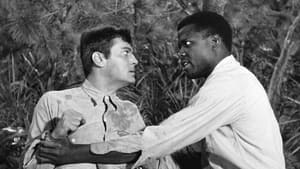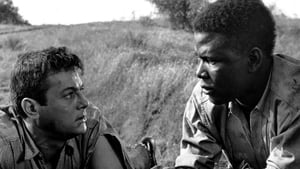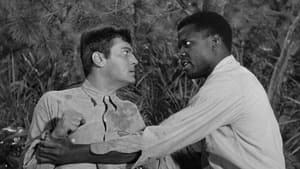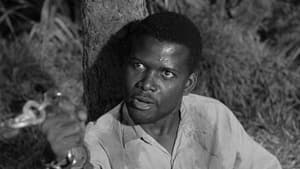Video Sources 0 Views
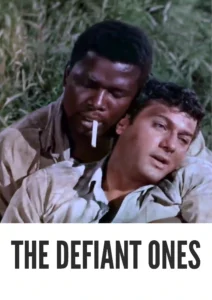
Synopsis

Delve into the raw intensity of The Defiant Ones, a groundbreaking social drama from 1958, now brilliantly colorized to amplify its enduring message. Directed by Stanley Kramer, this film presents a gripping narrative of two escaped convicts, chained together, who must overcome their racial prejudices to survive. A must-watch for enthusiasts of thought-provoking cinema and stellar performances, this HD download brings a timeless classic to a new generation.
The Defiant Ones tells the story of Noah Cullen (Sidney Poitier), a Black man, and Joe LeBeau (Tony Curtis), a white man, two escaped convicts shackled together as they flee through the Deep South. Their escape is fraught with peril, not only from the pursuing authorities but also from their deep-seated racial animosity towards each other.
As they navigate treacherous terrain and evade capture, they are forced to confront their prejudices and learn to rely on one another for survival. Along their journey, they encounter individuals who test their resolve and challenge their beliefs, including a lonely woman (Cara Williams) who offers them fleeting hope. The film explores themes of racism, injustice, and the possibility of redemption, culminating in a powerful climax that questions the very nature of prejudice. The Defiant Ones is a poignant and unflinching look at a divided America, reminding us of the importance of empathy and understanding.
The film boasts unforgettable performances from its lead actors:
-
Tony Curtis as Joe LeBeau
-
Sidney Poitier as Noah Cullen
-
Cara Williams as Billy
-
Theodore Bikel as Sheriff Max Muller
-
Charles McGraw as Captain Frank Gibbons
The Defiant Ones transcends typical genre classifications, standing as a powerful social drama with elements of suspense and adventure. It tackles complex social issues with unflinching honesty, making it a landmark film in American cinema. It could be described as a Race Relations Drama.
Released in 1958, The Defiant Ones arrived during the height of the Civil Rights Movement in the United States, a time of intense social and political upheaval. The film boldly addressed issues of racial inequality and prejudice, challenging audiences to confront their own biases. Stanley Kramer was known for directing films with strong social messages, and The Defiant Ones is one of his most impactful works. The film’s critical and commercial success demonstrated a growing awareness of the need for racial equality and helped pave the way for future films that tackled similar themes.
This colorized version of The Defiant Ones has been meticulously restored, enhancing the visual impact while respecting the film’s original artistic vision. The colorization process involved extensive research to ensure accuracy and authenticity, with careful attention paid to skin tones, costumes, and settings. The result is a visually stunning presentation that brings new life to the film’s powerful story, making it even more accessible and engaging for contemporary viewers. While some purists may prefer the original black and white version, this colorized edition offers a fresh perspective on a timeless classic.
-
: Stanley Kramer
-
: Nedrick Young (as Nathan E. Douglas) and Harold Jacob Smith
-
: Harold Jacob Smith
-
: Sam Leavitt
-
: Frederic Knudtson
-
: Stanley Kramer Productions
-
: United Artists
-
: 96 minutes
-
: MP4
-
: HD (1080p)
-
: Compatible with most devices, including smartphones, tablets, computers, and smart TVs.
The Defiant Ones (1958) was a critical and commercial success, earning nine Academy Award nominations and winning two, including Best Original Screenplay and Best Cinematography. The film’s powerful message and outstanding performances were widely praised, and it remains a relevant and important work of American cinema. It is considered a landmark film for its bold exploration of racial prejudice and its call for understanding and empathy.
-
: What is The Defiant Ones about?
-
A: The Defiant Ones is a story about two escaped convicts, one Black and one white, who are chained together and forced to overcome their racial prejudices to survive.
-
-
: Is The Defiant Ones (1958) a well-regarded film?
-
A: Yes, The Defiant Ones is considered a classic of American cinema and is known for its powerful message and outstanding performances.
-
-
: Is this version of The Defiant Ones colorized?
-
A: Yes, this version has been professionally colorized to enhance the viewing experience.
-
-
: What makes The Defiant Ones important?
-
A: The Defiant Ones is important for its bold exploration of racial prejudice and its call for understanding and empathy, making it a relevant film for contemporary audiences.
-
-
: What is the download format?
-
A: The download format is MP4, which is compatible with most devices.
-
-
: What resolution is the download?
-
A: The resolution is HD (1080p), providing a high-quality viewing experience.
-
Experience The Defiant Ones Today!
